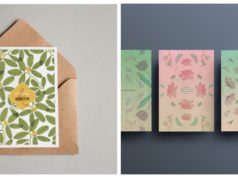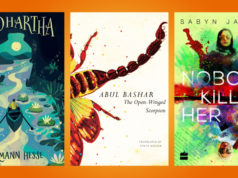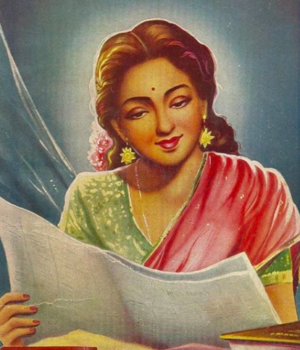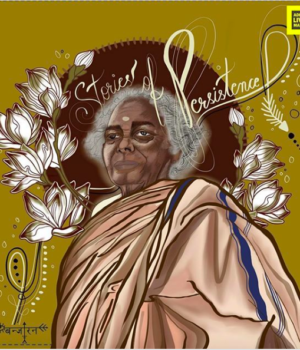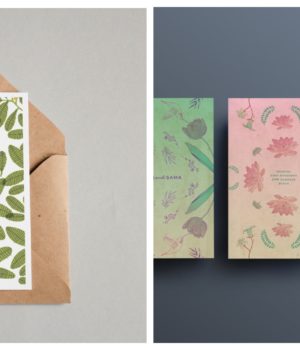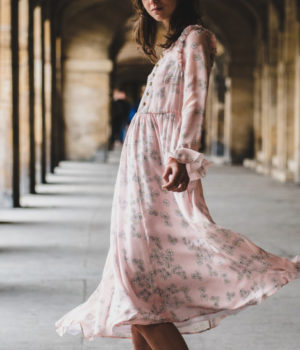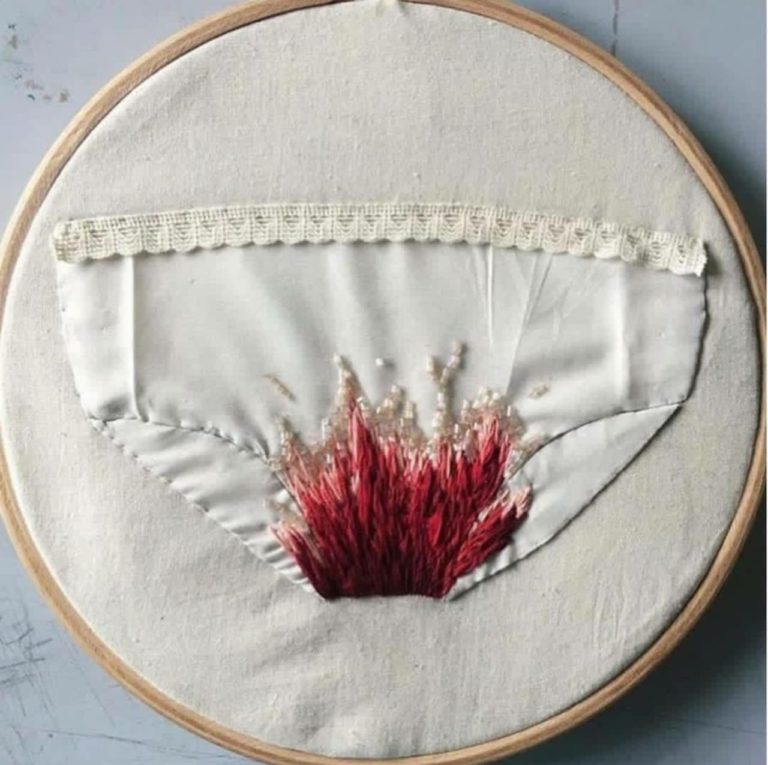
The Crimson Tide. On The Rag. Aunt Flo. Shark Week. So many code words, but all about the same thing- periods. Menstruation has long been a taboo topic, with our society being too ashamed or disgusted to ever talk about it. From being denied access to temples and kitchens, to being told not to touch pickle, to menstruation chapters being skipped over in Biology classes, women in India are constantly shamed for the biological process that is menstruation. Periods are concealed in brown paper bags from pharmacies and through blue liquid in advertisements, with no open discussions, or education.
Never been ones to shy away from working with taboo topics, artists in India have been delving into their mediums to point out why period shaming is harmful, and why it’s important to have open conversations about them. Menstrual art, or Menstrala – a term coined by artist Vanessa Tiegs, can sometimes include the use of menstrual blood, or just be about menstruation. As a medium, Menstrala holds an immense amount of social power. It comes in a variety of forms, and works for different causes. Some work in an attempt to normalize it, while others feature as protests to discriminatory or shaming practices. It has the ability to revolutionize and change what we perceive to be normal. Menstrala shifts social perceptions on menstruation.
Here are six Indian artists who use menstrala to fight existing stigmas around menstruation.
1.Painting with Blood
Menstrual art has been a part of feminist protest art for a long time. One of the first recorded instances was ‘Red Flag’, which depicts a bloody tampon being removed from the artist’s vagina. As a form of protest art, the piece was meant to shock audiences, and was an explicit depiction of menstruation. Over time, the development of menstrala paralleled the Women’s Liberation Movement.
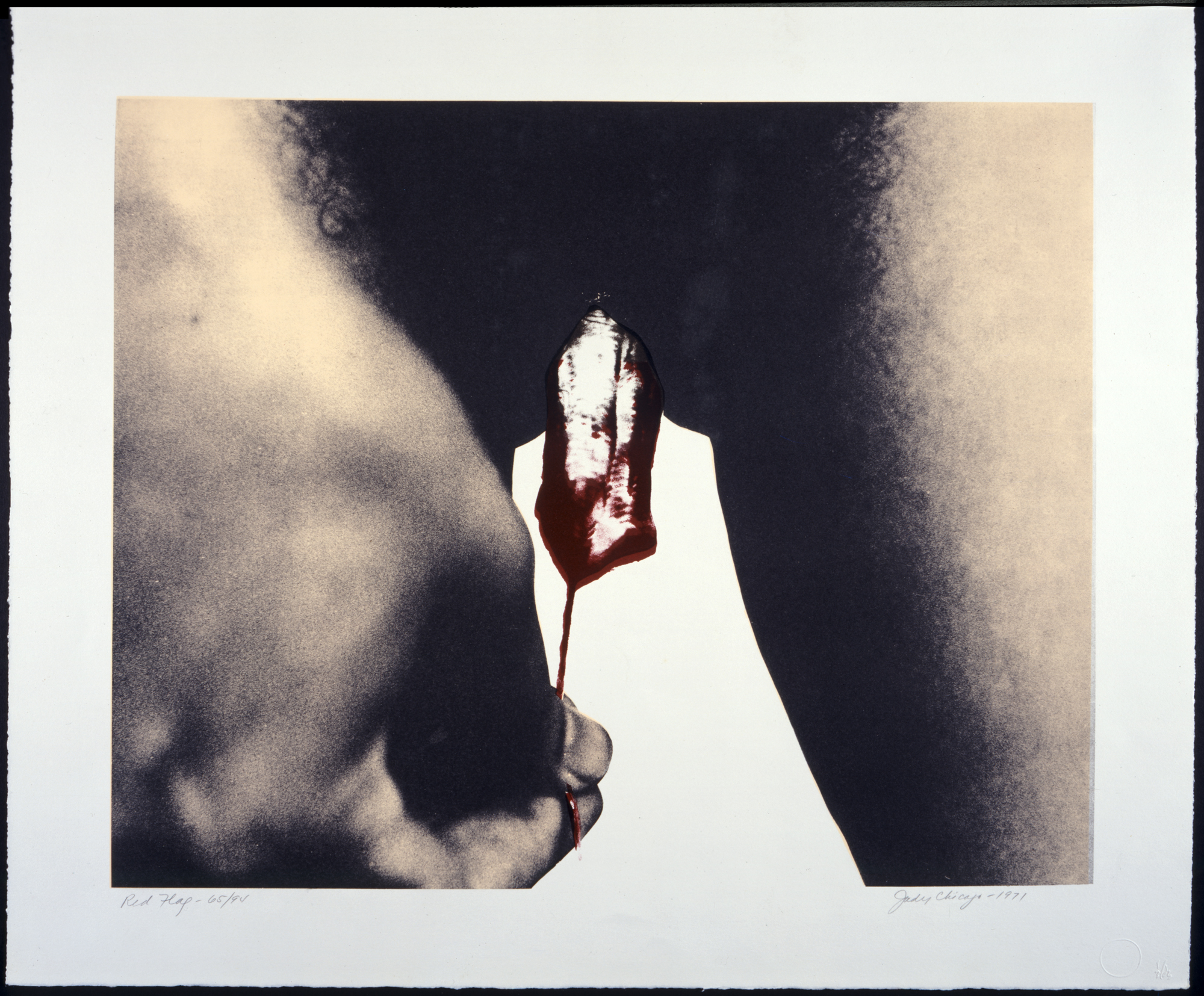
In India, Lyla Freechild is one of few artists who use menstrual blood in their work. She uses a combination of ink and blood in her paintings to normalise and open up discussions about menstruation. Through her work, she also discusses the ecological impact sanitary products have, and the need for a shift to more sustainable menstrual products. “I do not paint with menstrual blood to push others to take up the same. All I want is people to talk about it”, Freechild explained in an interview with The Week Magazine. Some of her previous work includes a large installation of a menstrual cup, created by stitching together over 400 menstrual cups.
Frankfurt-based Sikh artist Raman Chana’s series Body Prints “stands for being over-extrovert and not of being embarrassed,shameful or disgusting for being a woman”. Body Prints was used as a way to change existing views on menstruation, and present it as a gift rather than a taboo. The pieces were created by the artist painting herself with ink, and then sitting on a canvas for a few minutes while bleeding. The results were abstract like pieces, which she then photographed and exhibited.

2. Activist Art
Other forms of activist period art work to raise awareness about discriminatory or shaming policies and practices, such as the taxation of sanitary hygiene products.
In India specifically, a campaign called #LahuKaLagaan rose when sanitary napkins were taxed at 12% under the implementation of the GST. Most menstruating women in India cannot afford sanitary products and are often forced to use sand or even ash. Though some use cloth, the stigma and shame surrounding menstruation makes it incredibly difficult to use as they are not allowed to dry the cloth in sunlight. This means they resort to dark corners of houses, which are a high risk for infection. Artists on Instagram, such as Sahana Subramanyam and Sarah Naqvi started sharing work in remonstration to the taxation.
3. The Beauty of Blood
Other period art is used to show the beauty or natural aspects of the process. It works on a different tangent than protest art in that it does not try to create any shock, but instead naturalise menstruation. These include Rupi Kaur’s famous photography series, and Kaviya Ilango’s illustrations.
Artwork about menstruation tries to shift social perceptions and fight stigmas surrounding periods. They challenge existing notions of menstruation, and instead depict it as the natural biological process it is, with nothing icky or taboo about it. As a form of protest, Menstrala is instrumental in demanding for a change in the way we view periods.
Written by Raika Aban Sengupta
Featured image credits: Sarah Naqvi

